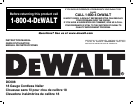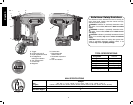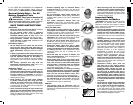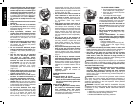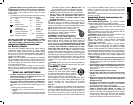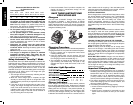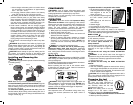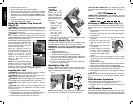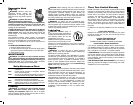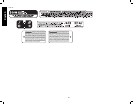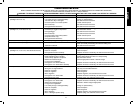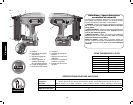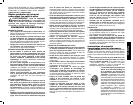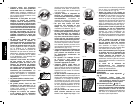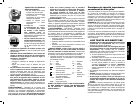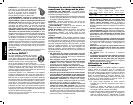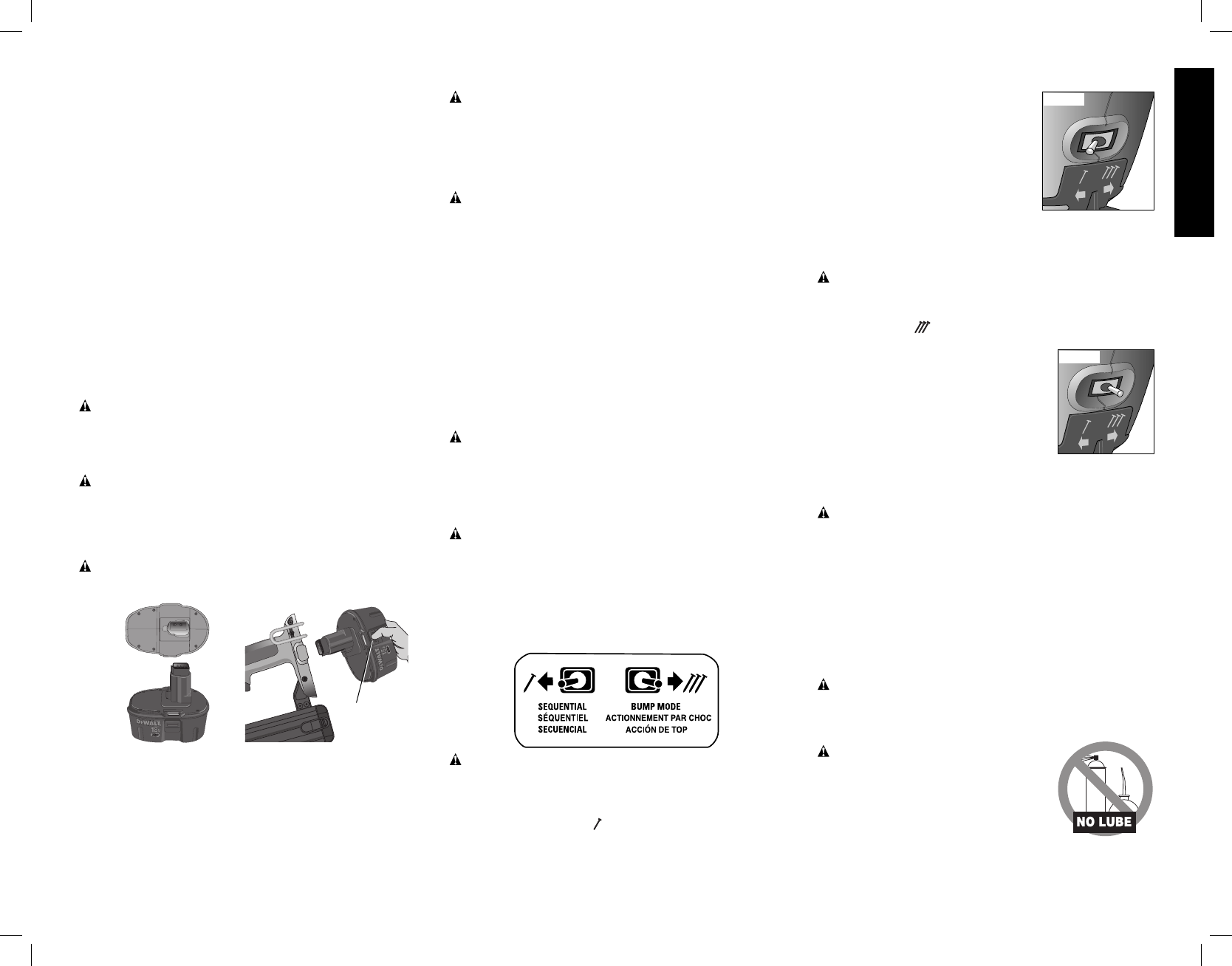
English
7
To operate the nailer in sequential action mode:
1. Flip the switch located on the body
FIG. 6
of the tool just between the trigger
and magazine to the left, as
shown in Figure 6.
2. Fully depress nosepiece against
the work surface (motor will
start).
3. Pull trigger (nail will drive into
work surface).
4. Release trigger.
5. Lift nosepiece off work surface.
6. Repeat steps 2 through 4 for next application.
CAUTION: The contact trip needs to be depressed
followed by a trigger pull for each nail followed by a release
of both the contact trip and trigger after each nail.
BUMP ACTION
Bump action is intended for rapid nailing
FIG. 7
on flat, stationary surfaces.
When using bump action, two methods
are available: place actuation and
bump actuation.
Flip the switch located on the body of
the tool just between the trigger and
magazine to the right as shown in
Figure 7.
To operate the tool using the PLACE ACTUATION
method:
WARNING: A nail will fire each time the trigger is
depressed as long as the contact trip remains depressed.
1. Depress the contact trip against the work surface.
2. Depress the trigger.
To operate the tool using the BUMP ACTUATION
method:
1. Depress the trigger.
2. Push the contact trip against the work surface. As long
as the trigger is depressed, the tool will fire a nail every
time the contact trip is depressed. This allows the user
to drive multiple nails in sequence.
CAUTION: Do not keep trigger depressed when tool is
not in use. Keep the contact trip lock-off engaged in the
locked position when the tool is not in use.
Preparing the tool
CAUTION: NEVER spray or in
any other way apply lubricants or
cleaning solvents inside the tool. This
can seriously affect the life and
performance of the tool.
NOTE: The battery pack is not fully
charged out of the carton. Follow
instructions outlined (see Charging Procedures).
1. Read the Safety Instruction section of this manual.
2. Wear eye and ear protection.
c. Move charger and battery pack to a location where
the surrounding air temperature is approximately
65°F - 75°F (18° - 24°C).
d. If charging problems persist, take the tool, battery
pack and charger to your local service center.
4. The battery pack should be recharged when it fails to
produce sufficient power on jobs which were easily
done previously. DO NOT CONTINUE to use under
these conditions. Follow the charging procedure. You
may also charge a partially used pack whenever you
desire with no adverse affect on the battery pack.
5. Under certain conditions, with the charger plugged
into the power supply, the exposed charging contacts
inside the charger can be shorted by foreign material.
Foreign materials of a conductive nature such as, but
not limited to, steel wool, aluminum foil, or any buildup
of metallic particles should be kept away from charger
cavities. Always unplug the charger from the power
supply when there is no battery pack in the cavity.
Unplug charger before attempting to clean.
6. Do not freeze or immerse charger in water or any other
liquid.
WARNING: Shock hazard. Don’t allow any liquid to get
inside charger. Electric shock may result. To facilitate the
cooling of the battery pack after use, avoid placing the
charger or battery pack in a warm environment such as in
a metal shed, or an uninsulated trailer.
CAUTION: Never attempt to open the battery pack for
any reason. If the plastic housing of the battery pack
breaks or cracks, return to a service center for recycling.
Installing and Removing the
Battery Pack
CAUTION: Engage contact trip lock-off before removing
or installing battery.
FIG. 3
FIG. 4
M
NOTE: Make sure your battery pack is fully charged.
To install the battery pack into the tool handle, align the
base of the tool with the notch inside the tool’s handle and
slide the battery pack firmly into the handle until you hear
the lock snap into place.
To remove the battery pack from the tool, press the
release buttons (M) and firmly pull the battery pack out of
the tool handle. Insert it into the charger as described in the
charger manual (Fig. 4).
COMPONENTS
WARNING: Lock off trigger, disconnect battery pack
from tool and remove fasteners from magazine before
making adjustments or personal injury may result.
Refer to Figure 1 at the beginning of this manual for a
complete list of components.
OPERATION
WARNING: Read the section titled Important Safety
Instructions for Nailers at the beginning of this manual.
Always wear eye and ear protection when operating this
tool. Keep the nailer pointed away from yourself and
others. For safe operation, complete the following
procedures and checks before each use of the nailer.
1. Wear proper eye, hearing and respiratory protection.
2. Remove battery pack from tool.
3. Lock the pusher in the back position and remove all
fasteners from the magazine.
4. Check for smooth and proper operation of contact
trip and pusher assemblies. Do not use tool if either
assembly is not functioning properly. NEVER use
a tool that has the contact trip restrained in the up
position.
5. NEVER use a tool that has damaged parts.
WARNING: To reduce the risk of personal injury,
disconnect battery pack from tool before performing
maintenance, clearing a jammed fastener, leaving work
area, moving tool to another location or handing the tool to
another person.
Mode Selection
WARNING: Always wear proper eye [ANSI Z87.1 (CAN/
CSA Z94.3)] and ANSI S12.6 (S3.19) hearing protection
when operating tool.
The D
EWALT cordless nailers are assembled in accordance
with the ANSI Standard SNT-101-2002.
Before operating this tool, look at the selector switch
to determine the actuation mode. Read all instructions
before selecting actuation mode.
WARNING: Keep fingers AWAY from trigger when not
driving fasteners to avoid accidental firing. NEVER carry
tool with finger on trigger. In bump mode tool will fire a
fastener if safety is bumped while trigger is depressed.
SEQUENTIAL ACTION
Use sequential action for intermittent nailing where very
careful and accurate placement and depth control is
desired.



